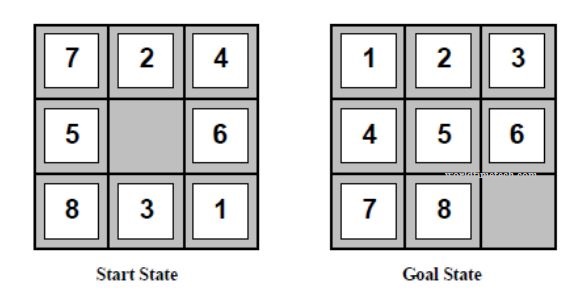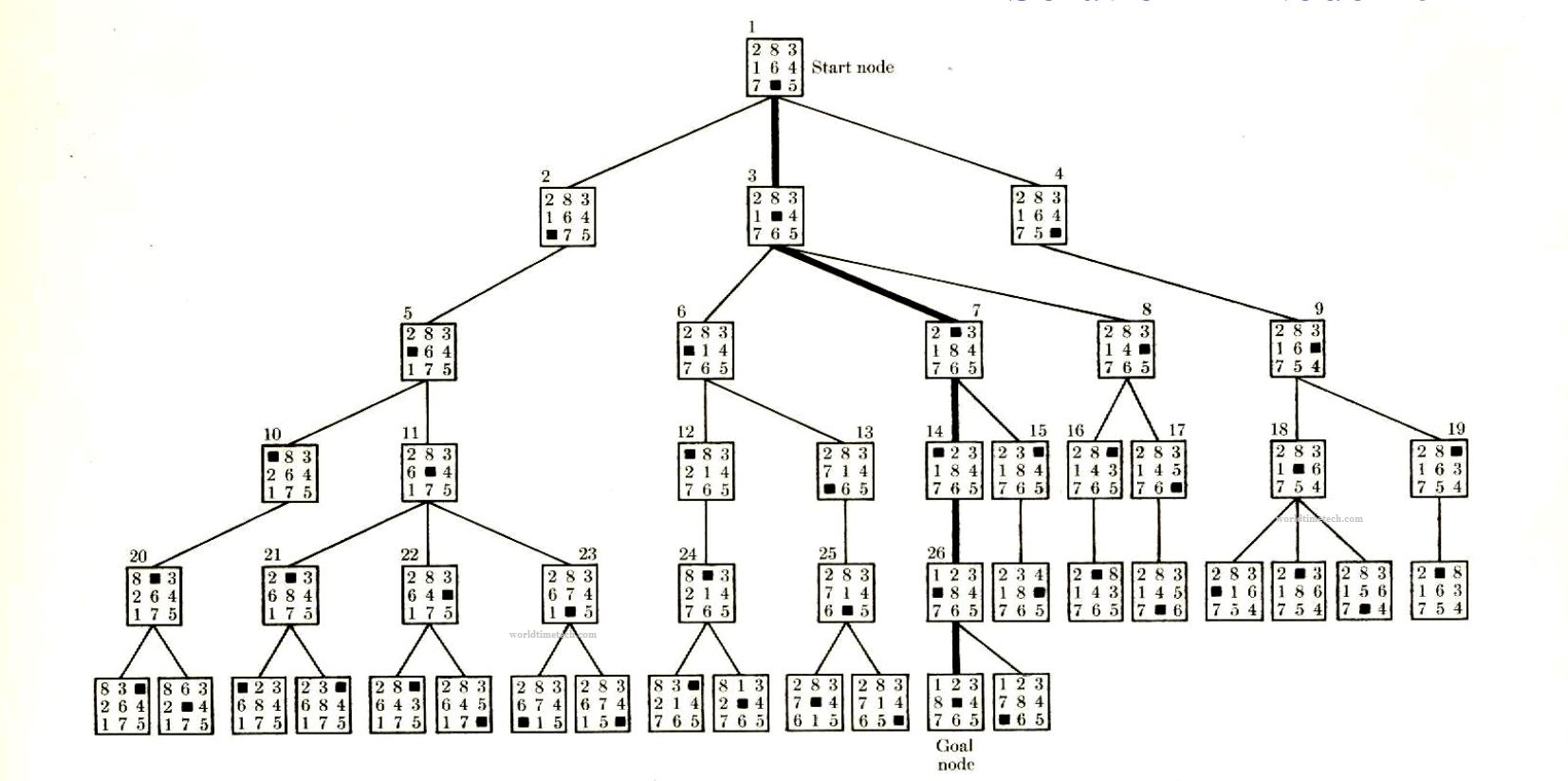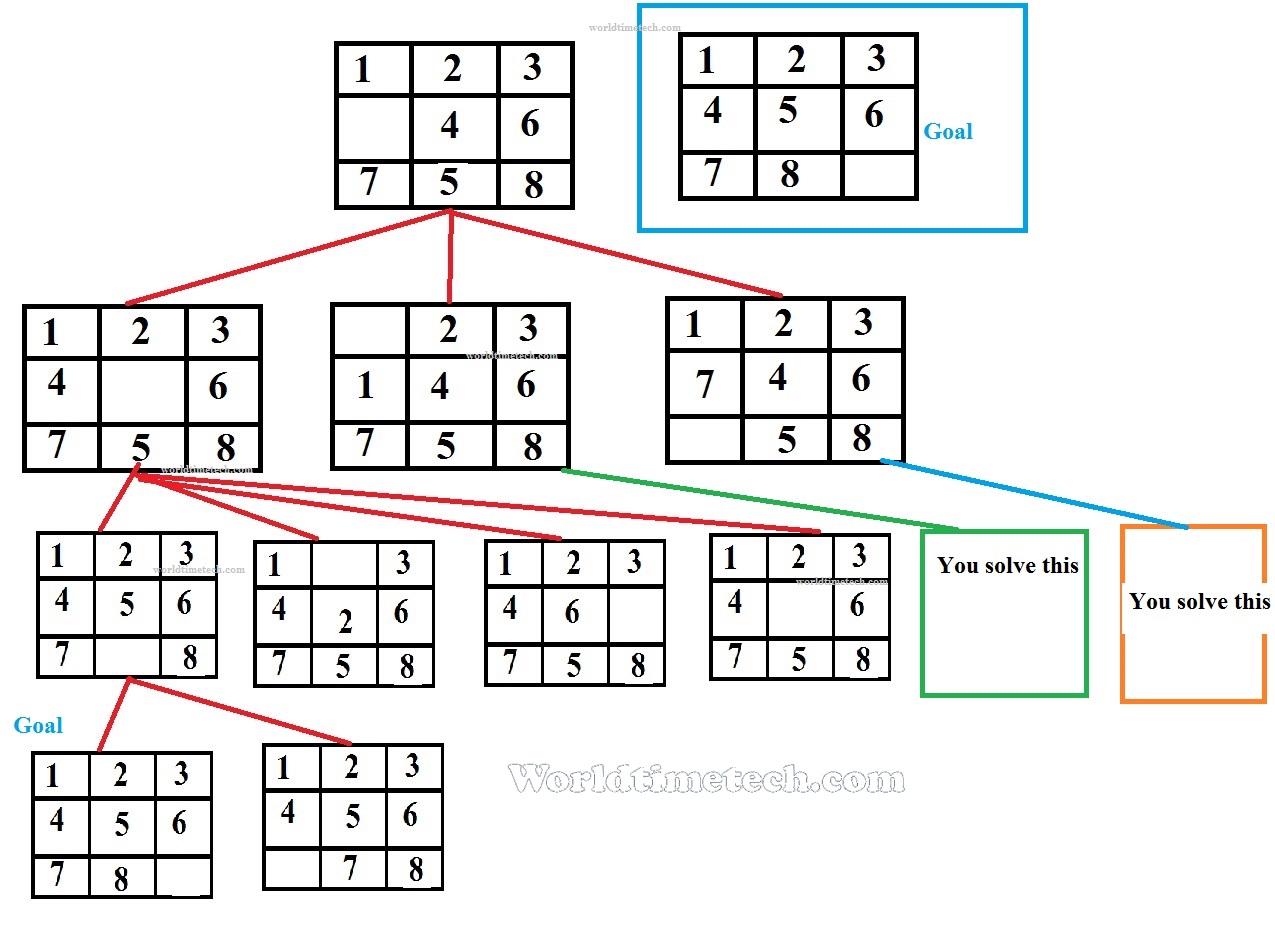The 8-puzzle is a classic sliding puzzle that is often used for educational purposes and brain-teasing entertainment. It consists of a 3x3 grid with eight numbered tiles and one empty space, arranged in a specific order. The goal of the 8-puzzle is to rearrange the tiles from their initial configuration into a desired final configuration. Here's a detailed explanation of the 8-puzzle and how to solve it:
Objective: Rearrange the tiles in the 8-puzzle from the starting position to the target position by sliding tiles into the empty space, making a series of moves.
Initial Configuration (Starting Position): The 8-puzzle starts with the tiles in a jumbled order within the 3x3 grid. The tiles are usually numbered from 1 to 8, and one cell is left empty.
Target Configuration (Goal Position): The objective is to move the tiles to arrange them in ascending order (usually from 1 to 8) with the empty space in the lower-right corner of the grid.
Rules: You can only slide a tile into the empty space if it is adjacent to the empty space, either vertically or horizontally. This sliding action swaps the tile with the empty space.
Solving the 8-Puzzle:
- Start from the Initial Position: Begin by studying the initial configuration of the 8-puzzle. Identify the locations of the tiles and the empty space.
- Plan Your Moves: Determine the sequence of moves needed to reach the target configuration. You can do this mentally or on paper.
- Move Tiles Strategically: Start making moves according to your plan. Slide tiles into the empty space to gradually reposition them closer to the target configuration.
- Solve in Stages: It's often helpful to solve the puzzle in stages. For example, you can focus on getting the tiles in rows or columns in the correct order first.
- Use a Logical Approach: Try to think ahead and avoid creating new problems as you solve the puzzle. Be systematic and patient.
- Trial and Error: If you get stuck, you might need to backtrack by undoing some moves to try different approaches. This is where problem-solving and critical thinking come into play.
- Practice: Solving the 8-puzzle may take some practice, and the more you work on it, the better you'll become at developing strategies.
Common Techniques:
A Search Algorithm:* This is a more advanced method that computer programs use to solve the 8-puzzle optimally. It involves searching for the best sequence of moves based on a heuristic function that estimates the cost to reach the goal.
Breadth-First Search: This is a simple but effective algorithm for solving the 8-puzzle. It explores all possible moves and can find a solution if one exists.
Remember, the 8-puzzle is an enjoyable brain teaser that can help develop problem-solving skills and spatial awareness. With patience and practice, you can become adept at solving it.

state: integer locations of tiles (ignore intermediate positions)
actions: move blank left, right, up, down (ignore unjamming etc.)
goal test: = goal state (given)
path cost: 1 per move
[Note: optimal solution of n-Puzzle family is NP-hard]
Here have example of two:

Another :

8 puzzle problem, 8 puzzle problem in, 8 puzzle problem algorithm, 8 puzzle problem, 8 puzzle problem example, 8-Puzzle, Sliding Puzzle, 8-Puzzle Problem, How to Solve 8-Puzzle, 8-Puzzle Solution, Educational Puzzles, Puzzle Solving Strategies, Logical Problem Solving, A Search Algorithm*, Breadth-First Search 8-Puzzle, 8 puzzle problem in, 8 puzzle problem state space representation, 8-puzzle problem without heuristic, 8 puzzle problem in, 8-puzzle problem in, 8 puzzle problem using algorithm, 8 puzzle problem in ai